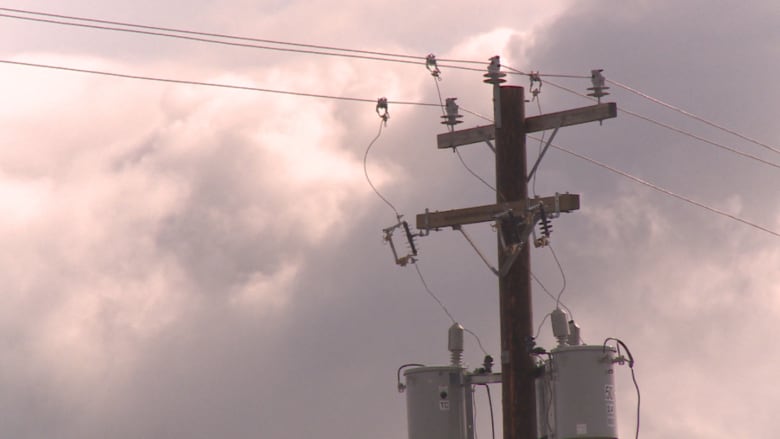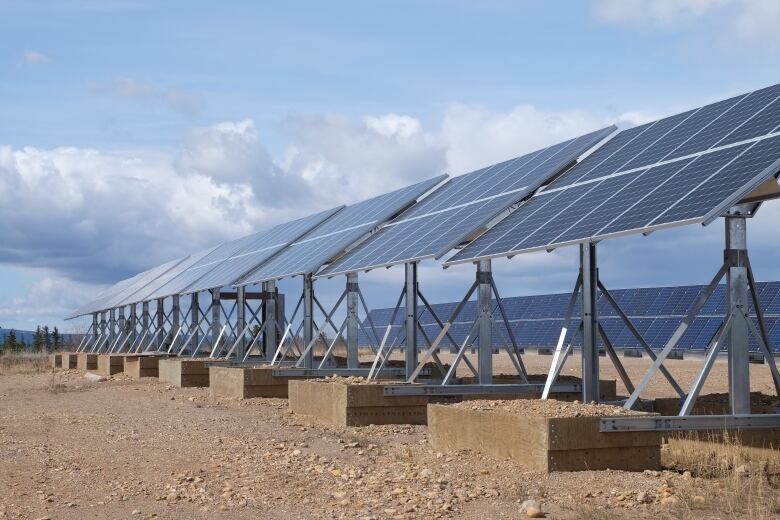Diesel, not wind or solar, still best backup for N.W.T. hydro, study claims
Minister accepts study but says conclusion is 'kind of sad'

More solar and wind projects will do nothing to ease the cost of power for many Northwest Territories residents, a new study claims.
Instead, the study says diesel fuel remains the cheapest and most effective backup when hydro systems around Yellowknife fail despite its cost and environmental impact.
"It is kindof sad," admitted public works minister Caroline Cochrane, who tabled the report in the legislature this week.
"We all wanted to say solar is the answer we take on solar and there's no more cost to us. [But] we can't just move in a direction where it impacts the consumers and costs them more."
The report, entitled the North Slave Resiliency Study, was commissioned by the territorial government and produced by a subsidiary of Manitoba Hydro.
It looked at ways to improve power supply in the North Slave following two years of low water in the region's hydro system, which led to decreased hydro output and unprecedented sums of extra diesel burned to compensate.
Hydro, diesel and drought
Having analyzed three decades of data, the study's authors argue back-to-back low-water years like 2014 and 2015 are rare.
Generally, they found the hydro system has more than enough capacity to meet the North Slave's current needs and supplementing hydro with more renewable power sources would mostly result in wasted energy at no saving.

Even if the population ticks upward and climate change takes its toll, the study suggests the North Slave hydro system is vulnerable only in extreme years of drought.
Wind and solar projects, it claims, will be no help in those extremes over the next two decades as they cost much more to set up and operate than simply paying for diesel as usual.
According to figures produced by the authors, wind power could save $37 million compared to diesel over the next two decades but would cost $97 million to introduce.
"In summary, the wind farm would increase consumer costs," states the report.
A similar conclusion is reached for solar and biomass, although liquefied natural gas already used in Inuvik is recommended as an option that would save some money while employing a slightly cleaner fuel source.
"The infrastructure to put [renewable energy sources] into place is millions and millions of dollars, and yet we are not at capacity right now," said Cochrane.
"If we had a new mine come in, we would have to look at that again. But currently it is cheaper and more cost-effective to use diesel as a backup."
If the cost of installing and operating solar and wind facilities drops, Cochrane pledged her department would look again at those options.
The report pertains only to the North Slave; the government has a stated objective of introducing more renewable energy to smaller, primarily diesel-powered communities elsewhere in the N.W.T.
Save money for a dry day?
In the region around Yellowknife, the territory has been forced to find $60 million in subsidies over the past two years to pay for additional diesel when hydro failed ensuring residents did not face a substantial rate hike.
The authors of the report say that's not acceptable and two financial changes can be made to avoid a repeat.
Firstly, the Northwest Territories Power Corporation (NTPC) can change the method it uses to come up with the rates it wants to charge taking into account the broader 30-year average for diesel used.

Secondly, the study says a "rate subsidization fund" (different to the one currently used by NTPC) should be introduced. Money saved during years of good hydro performance would be squirrelled away in this fund, to cover diesel costs in low-water years, instead of requiring a government bailout or rate rider. According to Cochrane, this recommendation is one the territory is likely to pursue as a priority.
A project to renovate the Bluefish dam, which will add a small amount of extra capacity, is also high on that priority list. However, Cochrane says federal money will be required to look into the study's other recommendation of expanding the North Slave power grid to reach various mines.
In the legislature on Thursday, some regular MLAs expressed concern at the report's findings.
Frame Lake MLA Kevin O'Reilly claimed the territory had abruptly cancelled earlier plans to solicit ideas for new projects from solar and wind providers, adding that the study showed the N.W.T.'s "direction is already being set" ahead of the forthcoming publication of a territorial energy plan.
Kam Lake MLA Kieron Testart said: "Northerners want a real investment in renewable energy and we need to look at all the options. All feasibility studies aside, we need to make these solutions work today."












_(720p).jpg)


 OFFICIAL HD MUSIC VIDEO.jpg)
.jpg)



























































































